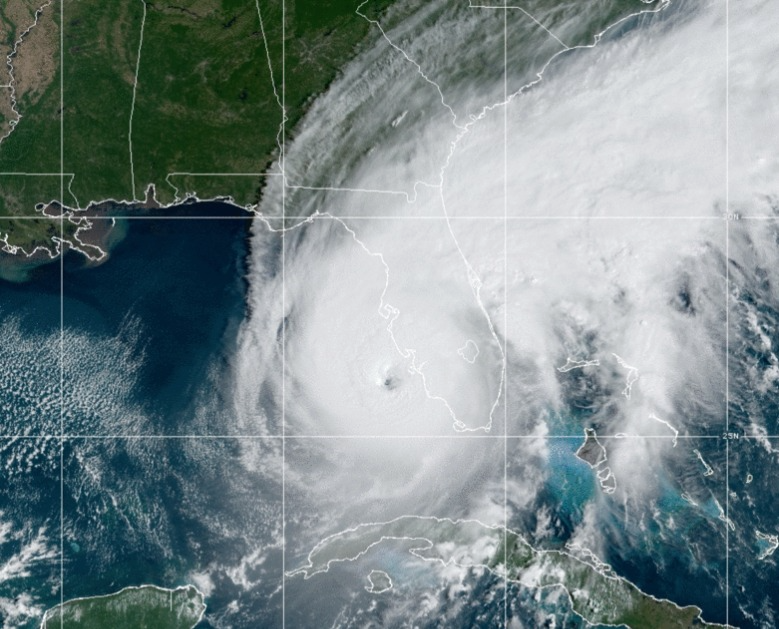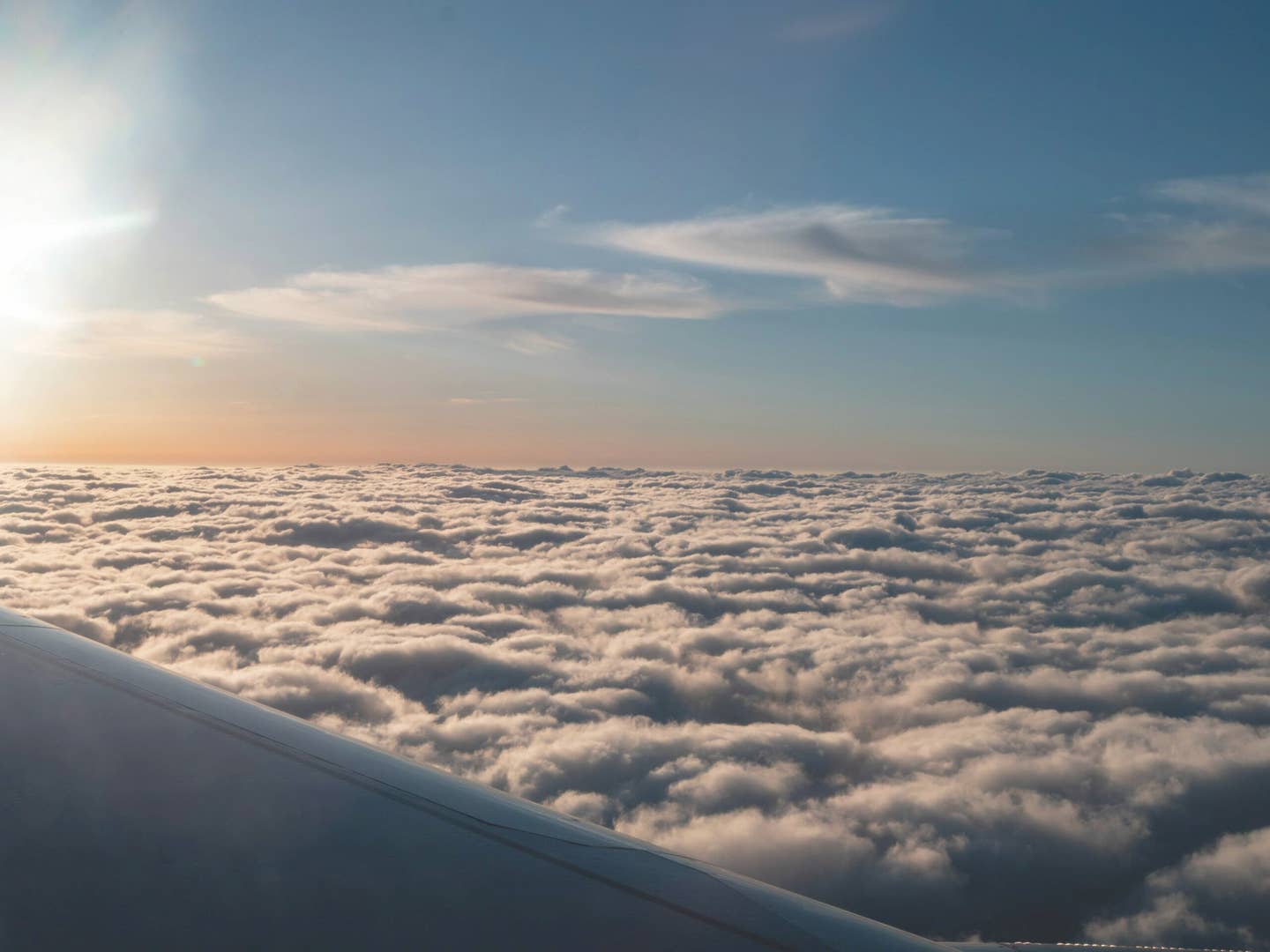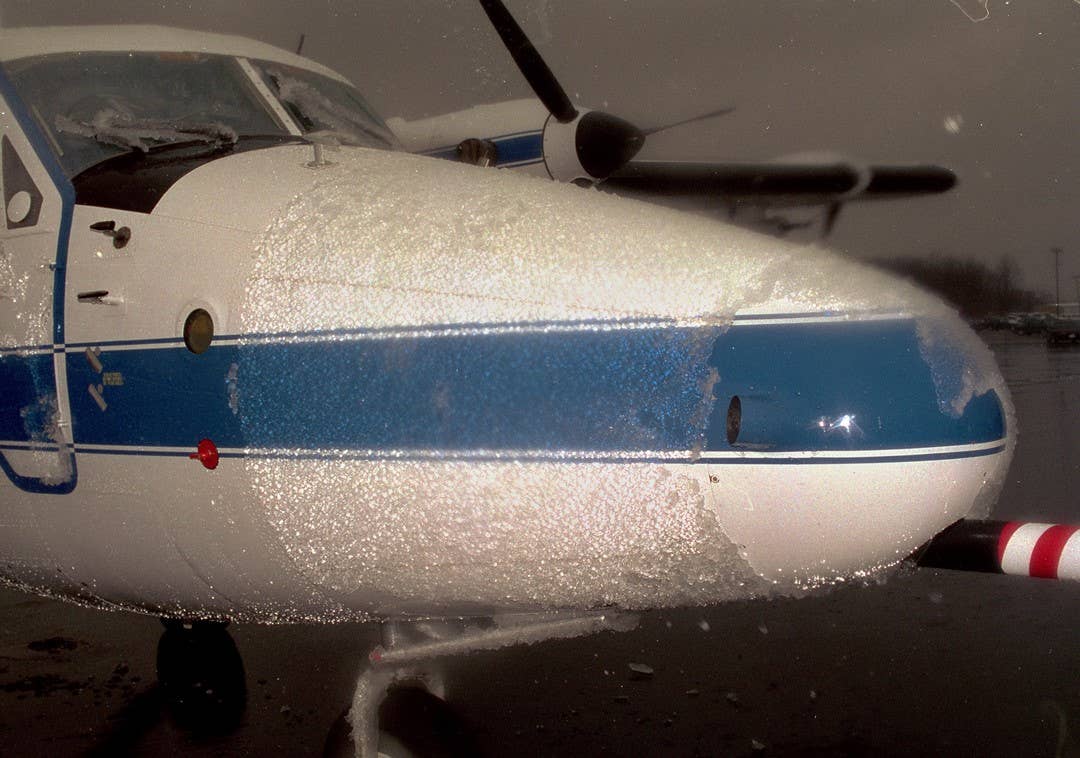Pilots Brace for Hurricane Ian
When stories about hurricanes damaging airports appear, one of the first questions asked is, “Why didn’t the pilots move their aircraft?” The answer is often they did—but the storm changed direction. Such was the case in 2004 when Hurricane Charley bore down on Florida.

Hurricane Ian bearing down on Florida. [Courtesy: NOAA]
When stories about hurricanes damaging airports appear, one of the first questions asked is, "Why didn't the pilots move their aircraft?" The answer is often they did—but the storm changed direction. Such was the case in 2004 when Hurricane Charley bore down on Florida.
If you talk to a pilot in Florida who was around in 2004, don't be surprised if they compare Hurricane Ian with Hurricane Charley. Charley was a Category 3 storm. Most pilots and airports started preparing for the hurricane days in advance.
One of those pilots is KT Budde-Jones from Kissimmee. Budde-Jones and her husband, Syd, operate Stallion 51, a company based at Kissimmee Gateway Airport (KISM). The company provides pilots the opportunity to fly World War II P-51 Mustangs and do upset recovery training in an L-39—but today the airport is closed and will be for a few days until Hurricane Ian passes.
"We are waiting for it to barrel on in like Charley did all those years ago," says Budde-Jones. "It's following the same path. I remember Charley like it was yesterday. It was supposed to hit north around Tampa but it changed course and tore through Central Florida."
With Charley, Kissimmee was originally supposed to be an airport of respite, she says, as many pilots relocated their aircraft from Tampa, to get them out of harm's way.
"The ramp was covered with airplanes," Budde-Jones recalls. "Then around 3p.m. we heard it had changed course and was coming our way, and by 8 p.m. it was on top of us, lots of rain, lots of tornadoes."
The Kissimmee Airport was slammed. One of the businesses to get hit the hardest was Warbird Adventures owned by Tom Richard. The company offers flight training in vintage military aircraft.
"We had put our airplanes and helicopters into the big fancy new FBO hangar," Richard recalls. "They were in there with 18 other airplanes—and the hangar came down on top of them. It was a big disappointment. We would have been better off to have left them on the ramp," he says, noting that he also lost his house in the storm. But, he says, the loss of the T-6 and Bell helicopters he felt more keenly.
He believes it was a tornado that took the hangar. "The wind meter at the airport broke at 117 mph," he said, adding that as part of the Charley cleanup, he built a hangar to withstand winds up to 140 mph, noting, "Florida building code was winds to 110 mph after Charley."
Kissimmee Today
Both Richard and Budde-Jones caution pilots, and anyone else who may find themselves in the storm's path, to take preparations seriously.
"After Charley, Frances, and Jeanne we certainly do at Kissimmee," Budde-Jones says. "The airport is closed, the gates are locked, the airport manager went around making sure the hangars are secure. If the storm misses us, no big deal. It's like doing a preflight inspection—make sure you take care of things that could become problems."
For example, hangars often become junk filled—it's supposed to supply shelter for your airplane, but before you know it, it's the place you put that bicycle you're going to fix up someday, those toys your kids have outgrown, the wheelpants from your buddy’s project, several boxes of those aviation magazines you want to store but your wife told you to get rid of, etc. These items can become projectiles and do further damage if your hangar becomes compromised by a tornado.
Budde-Jones notes that aircraft owners need to also consider what aviation items they store in their hangar—keeping all the aircraft paperwork and logbooks there may not be the best idea, because if the hangar is destroyed those items go with it.
"It's also helpful to have tie-downs in the floor of the hangar and secure the airplane, because [who’s to] say if the roof or door are blown off, the airplane won't be blown into a wall," she says. "Also, don't put all your resources in one location. If you have the option to split it up, do so. The tornado that came through Kissimmee with Charley picked up a huge hangar that was filled with airplanes and moved it back about 30 feet and dropped it, smashing airplanes and cars."
Budde-Jones says no one was injured at the airport, but they definitely learned a painful lesson.
"The best advice is stay ahead of the weather—get the alerts on your phone. Make sure everything is secured and strapped down. If nothing happens, we're closed for a couple of days—and we're lucky."
Stuck in Orlando
Several airports in Florida have shut down or have issued a NOTAM indicating that they will be shut down as Hurricane Ian approaches—leaving travelers scrambling to make other plans.
That's what has happened to Bret Koebbe, senior vice president of Sporty's Pilot Shop. Koebbe, his wife, Bonnie, and 1-year-old son Jacob are in Florida visiting friends. They were supposed to fly back to Ohio on Friday on an airliner, but their flight was canceled. Koebbe immediately went online to look at the option of renting a car to drive home. Although he did not relish the idea of spending 14 hours in a car with a 1-year-old, he had to look at the options.
"Rental cars were renting for $850 one way, then five minutes later, it went to $1,500," he said. The irony of this, he adds, is that if he had been flying the Sporty's Piper Aztec, the family would have left Monday well ahead of the storm. However, the vacation with the airliner was planned several months in advance, as neither he and wife were sure how their son would take to air travel.
"The joke at Sporty's right now is that we should have brought the Aztec." he said.
As far as the weather they are experiencing in Orlando, as of Wednesday afternoon, it was mostly bands of rain. "They are expecting 15-20 inches, which is a lot," says Koebbe, adding that the winds are expected to reach 50 mph—and there may be tornadoes. That can be a concern, because unlike homes in the tornado-prone Midwest, Florida homes do not have basements. Sheltering is done in an interior space, like a bathroom or a closet. One plus, many modern Florida homes are designed so that the first floor is made of cinder block, which is much more wind resistant than wood.
After the Storm
Another reason many pilots are watching the storm is so that they are poised to help when able. After Hurricane Katrina devastated New Orleans in 2006, pilot Darryl Penney from Washington state and a pilot friend from his church flew to Louisiana in a Cessna 205 to join in the relief effort.
"We talked about what we could do to help those people on Friday, then on Saturday, we put together a nonprofit bank account so people could make donations, put $5,000 on a credit card, and flew to New Orleans," Penney says.
They made contact with a group called "Brother's Keeper," a not-for-profit relief organization based out of Peachtree Dekalb Airport (KPDK). "We told them we were there to fly supplies in and people out."
Their motto, says Penney, was "Don't go empty." They brought in much-needed supplies, such as fresh water and bleach, to deal with the mold caused by flooding and brought out people who were looking to leave the area and had someplace to go. Often they had to find the supplies themselves. "Brother's Keeper would tell us 'we need this or this' and put out a call and people would show up and drop off stuff; or we would contact the Red Cross and ask, 'what do you need,' and they would tell us, and then we would start making calls and then you'd go get it."
There were many aircraft in the vicinity doing the same thing, and there were flights from law enforcement and dignitaries who came to survey the damage. "Although the weather was VFR, we were always on an IFR flight plan," Penney says. "We crossed paths with the President twice."
The biggest challenge during the two weeks they were there was not necessarily getting supplies, says Penney, it was getting sleep. "There was so much need to talk to people," he says.

Sign-up for newsletters & special offers!
Get the latest FLYING stories & special offers delivered directly to your inbox






